-
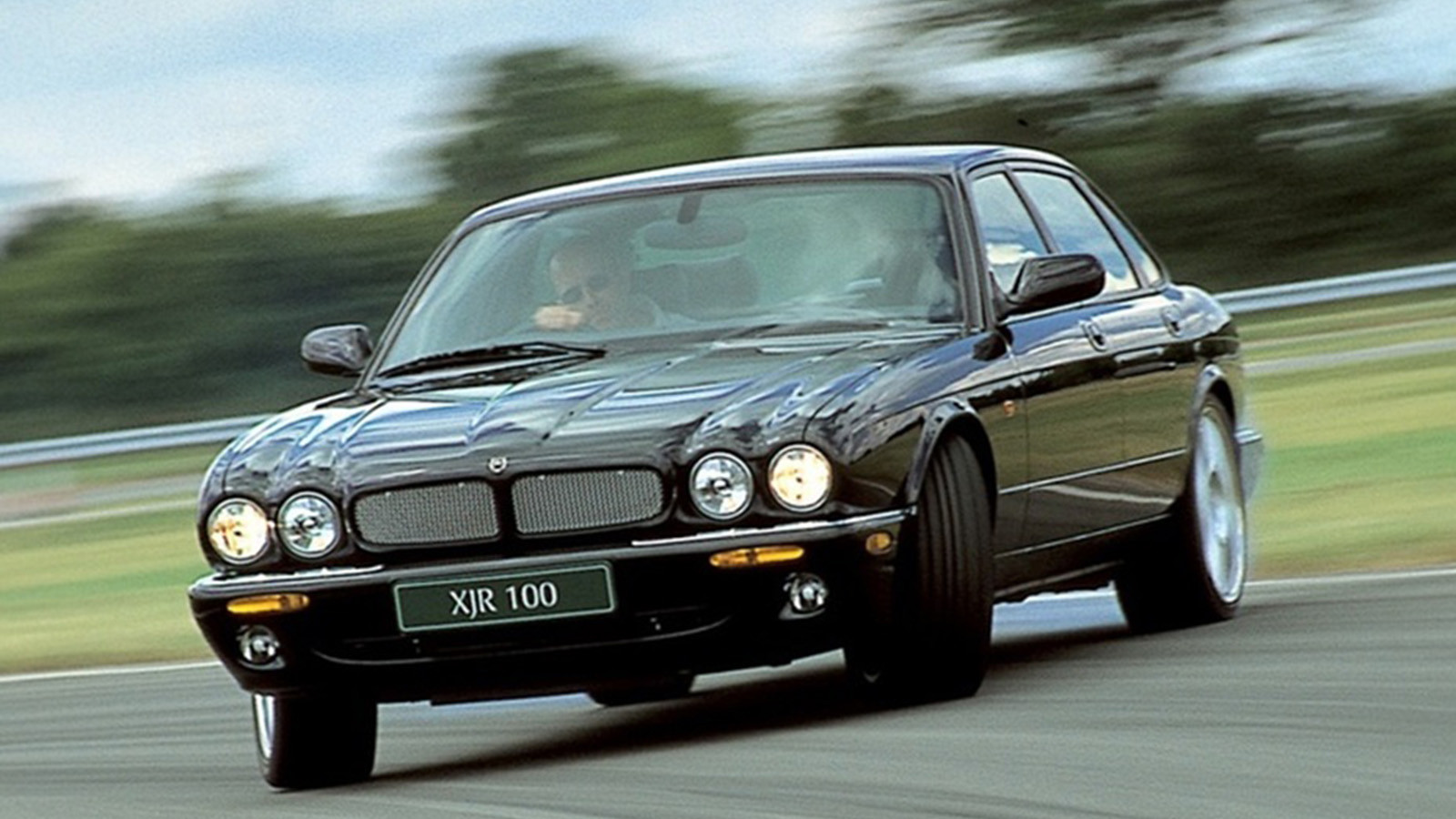 © Jaguar
© Jaguar -
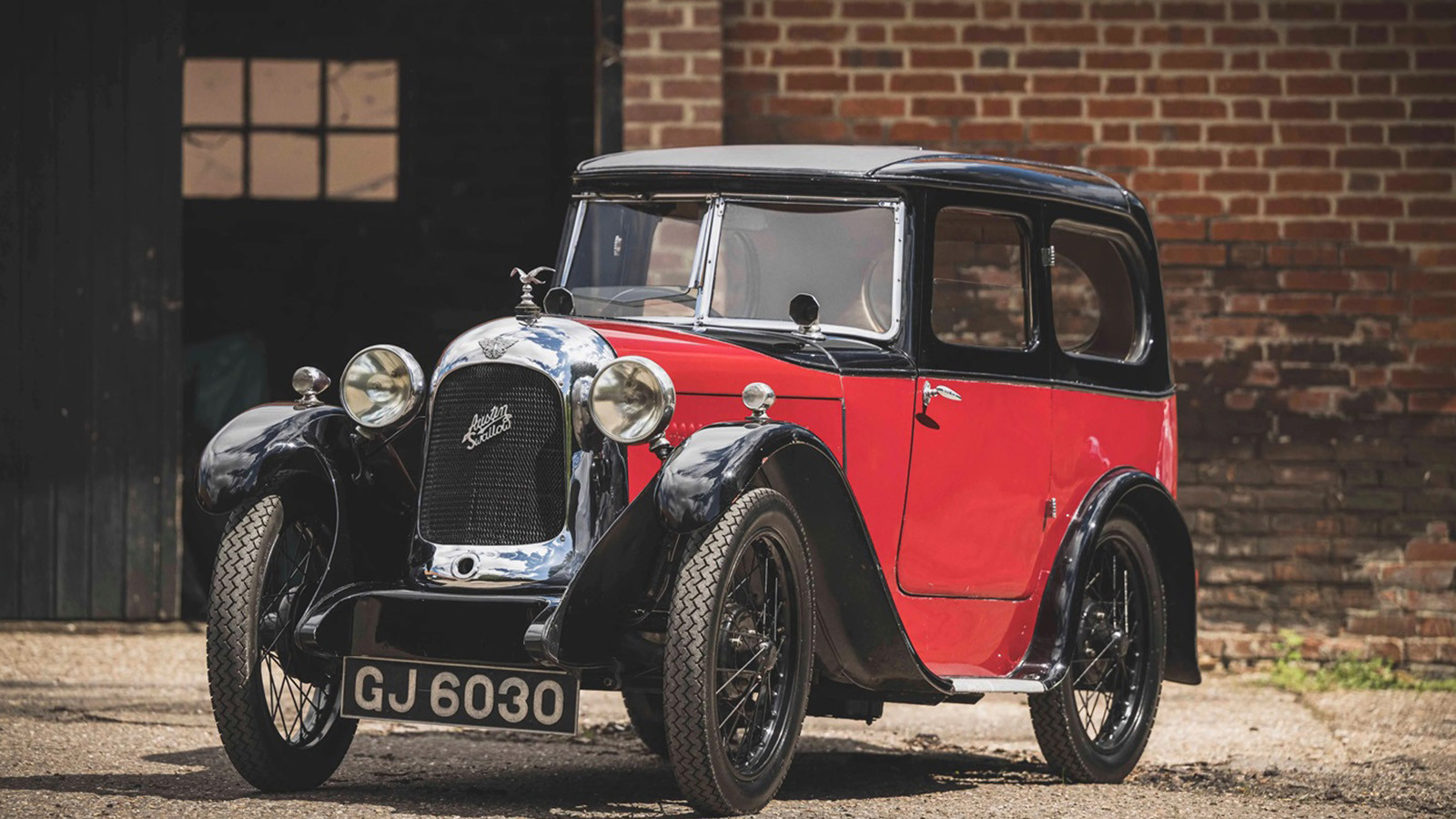 © Bonhams|Cars
© Bonhams|Cars -
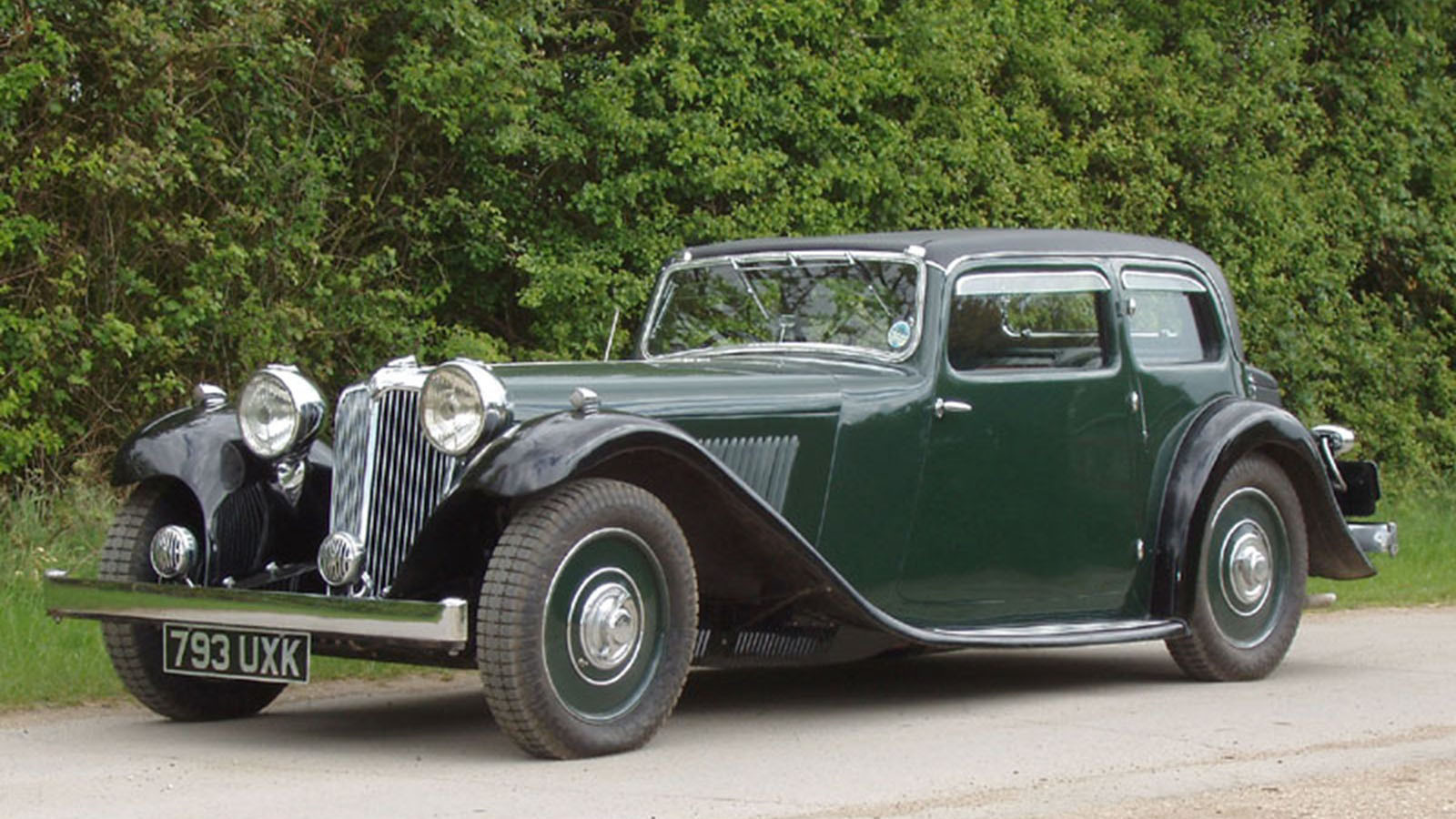 © H&H Classics
© H&H Classics -
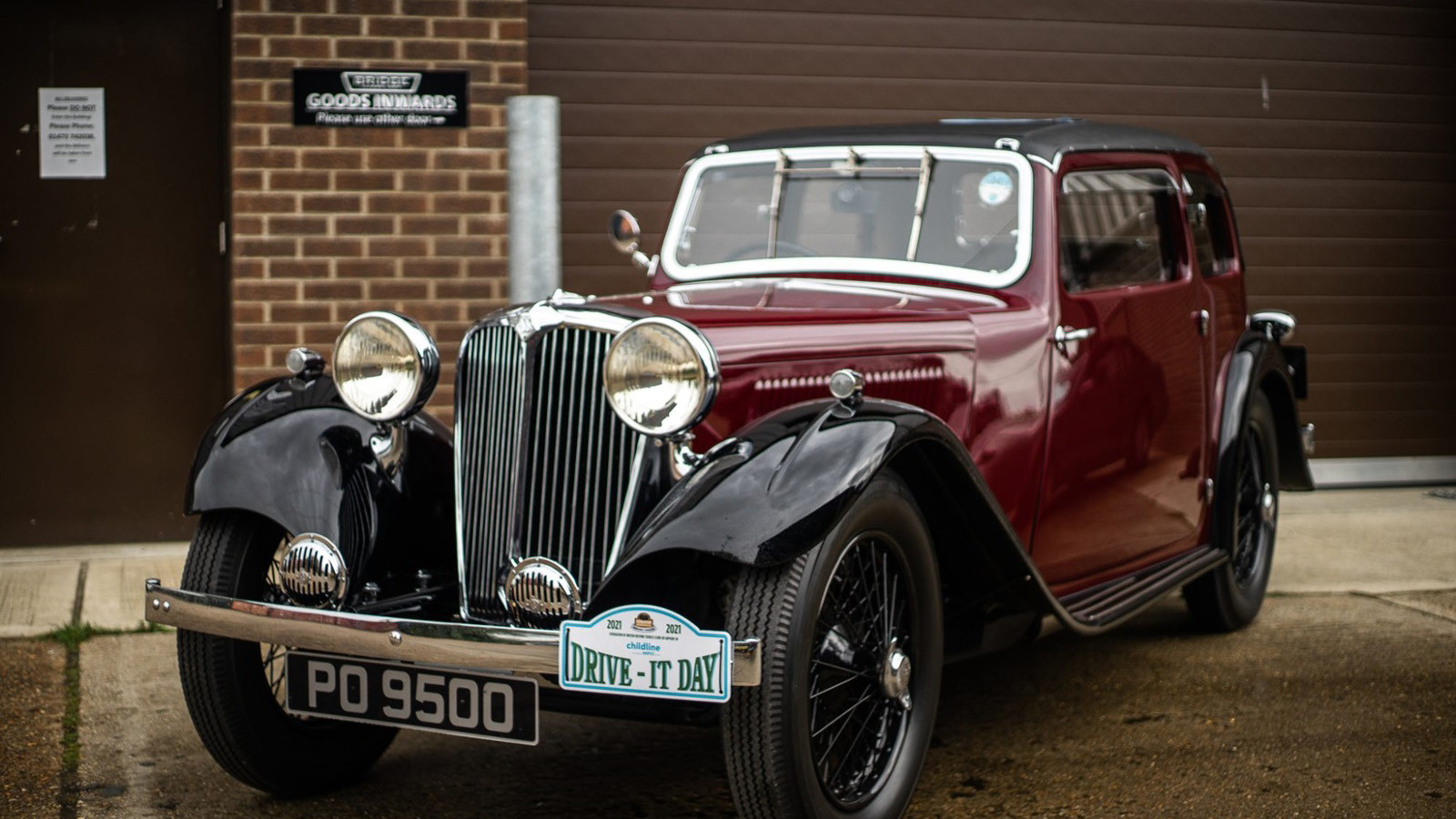 © Bridge Classic Cars
© Bridge Classic Cars -
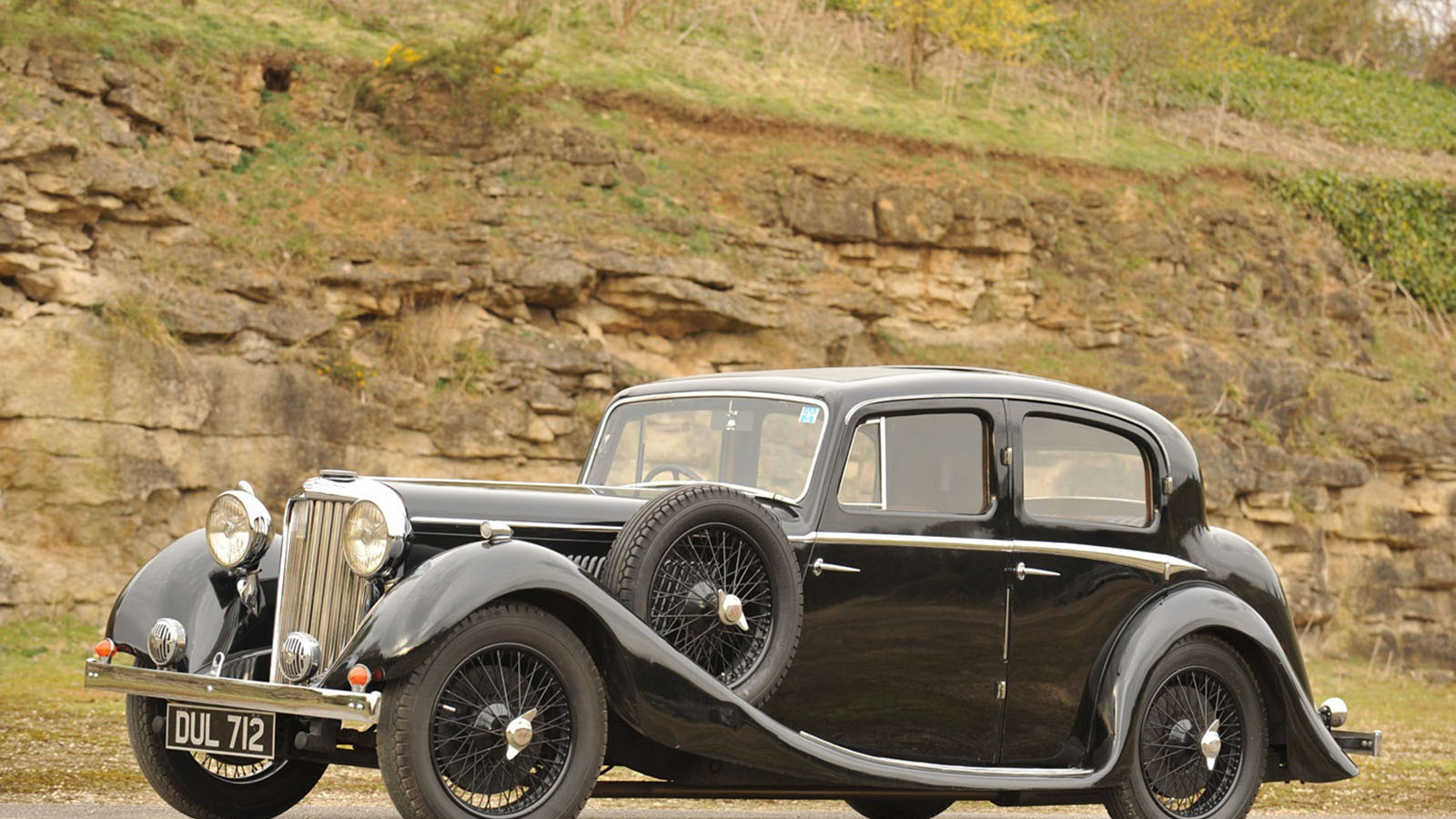 © Bonhams|Cars
© Bonhams|Cars -
 © Dorset Vintage and Classic Auctions
© Dorset Vintage and Classic Auctions -
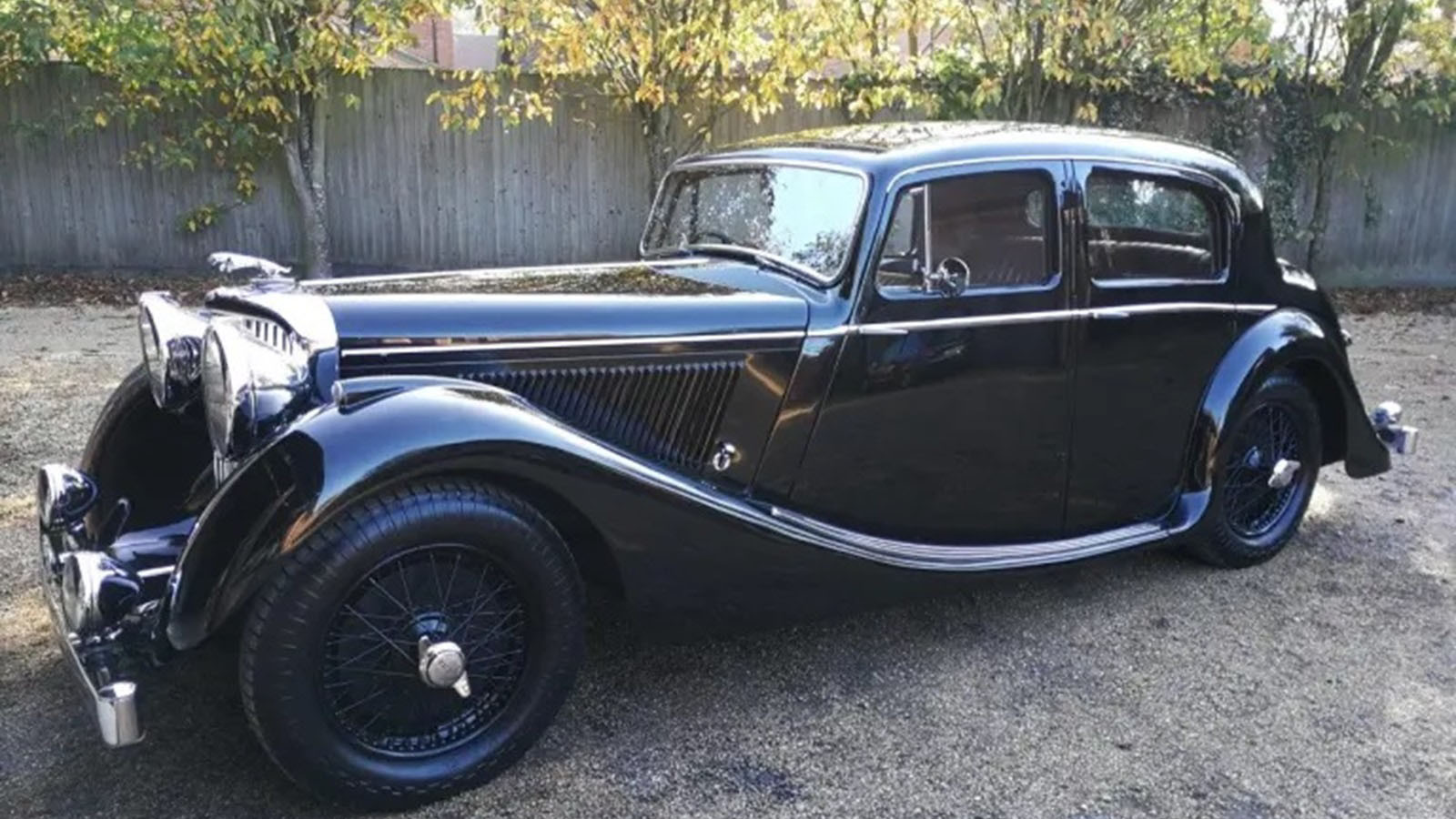 © Davenport Cars
© Davenport Cars -
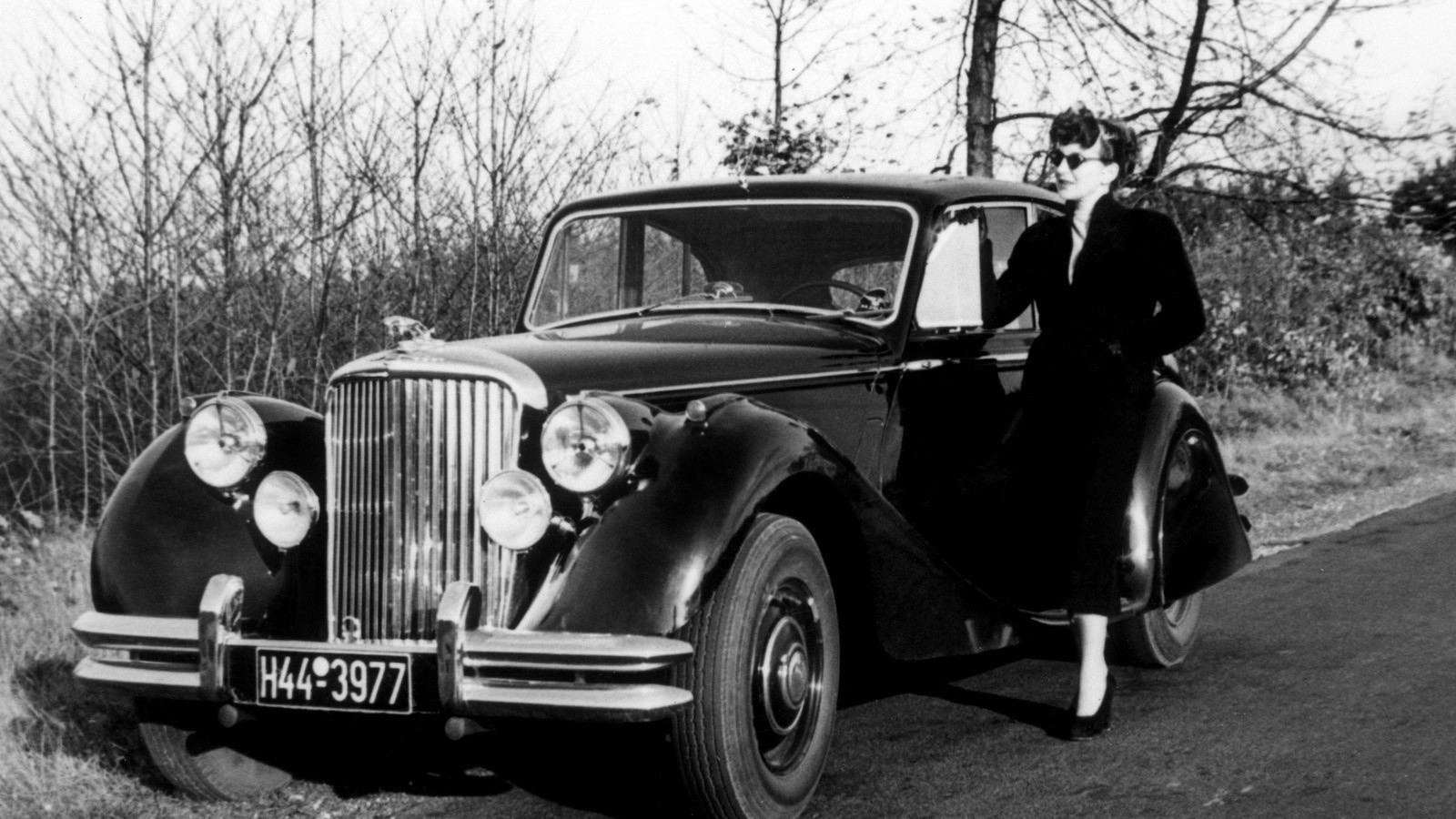 © Jaguar
© Jaguar -
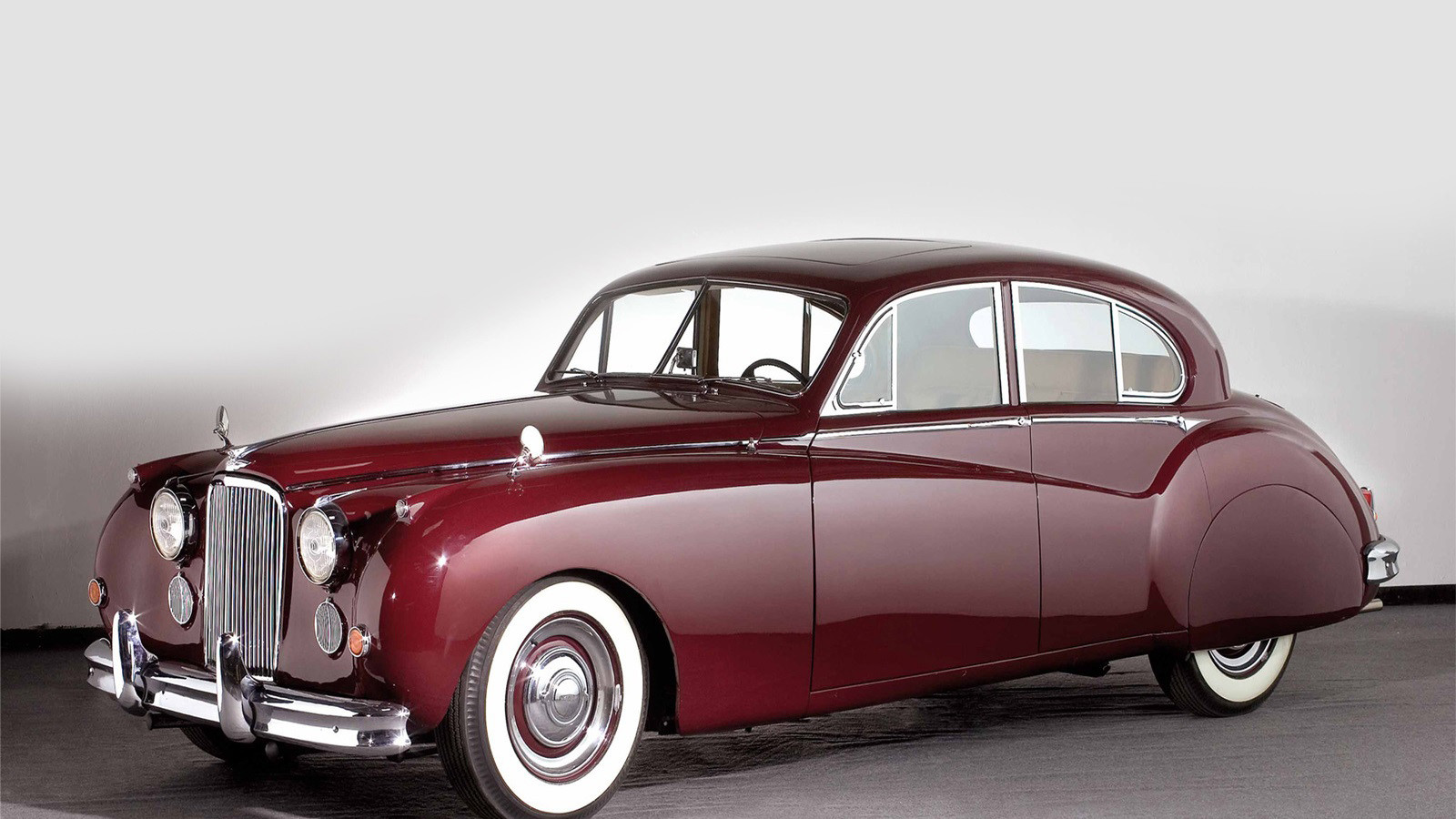 © Jaguar
© Jaguar -
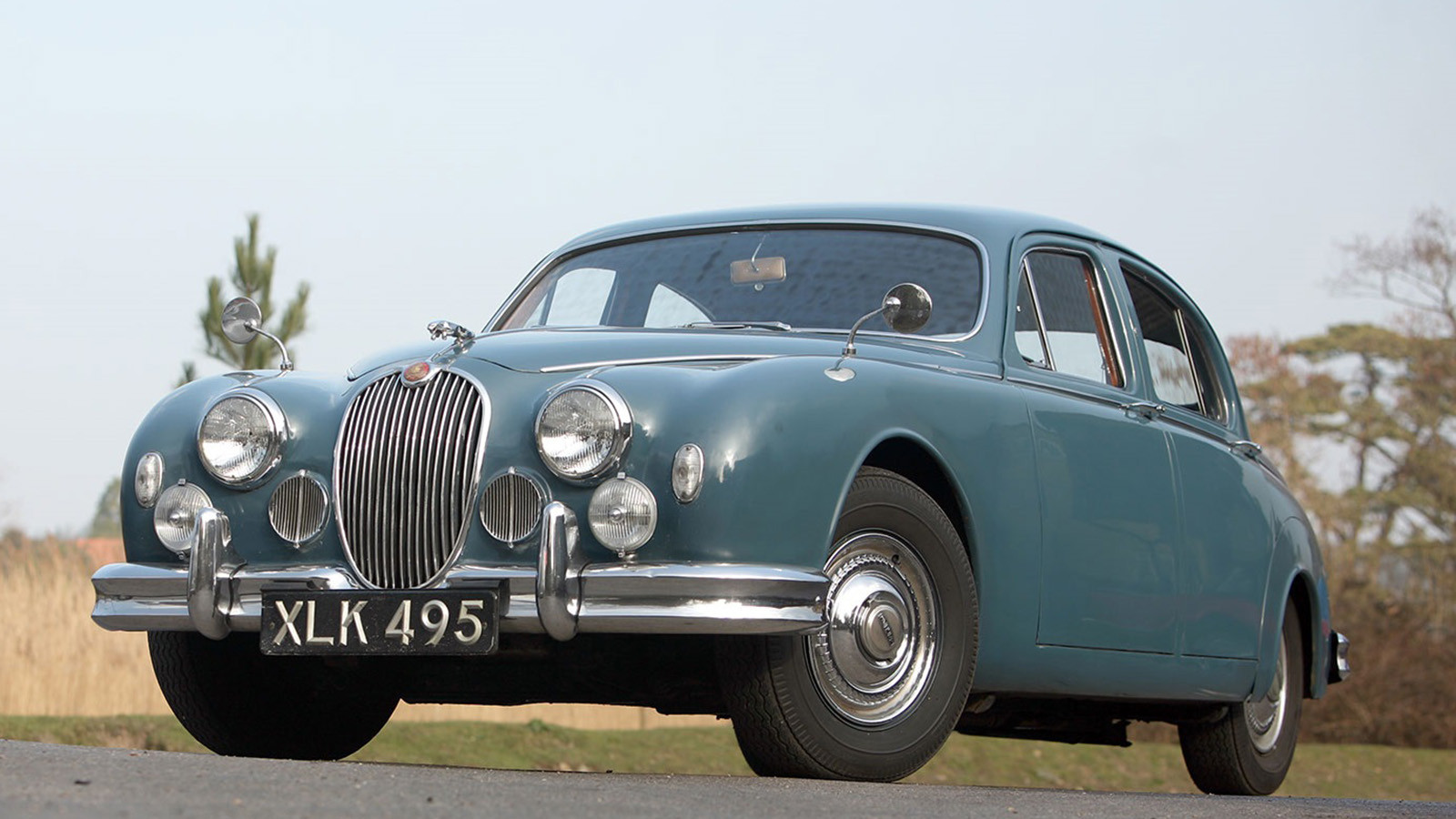 © Classic & Sports Car
© Classic & Sports Car -
 © James Mann/Classic & Sports Car
© James Mann/Classic & Sports Car -
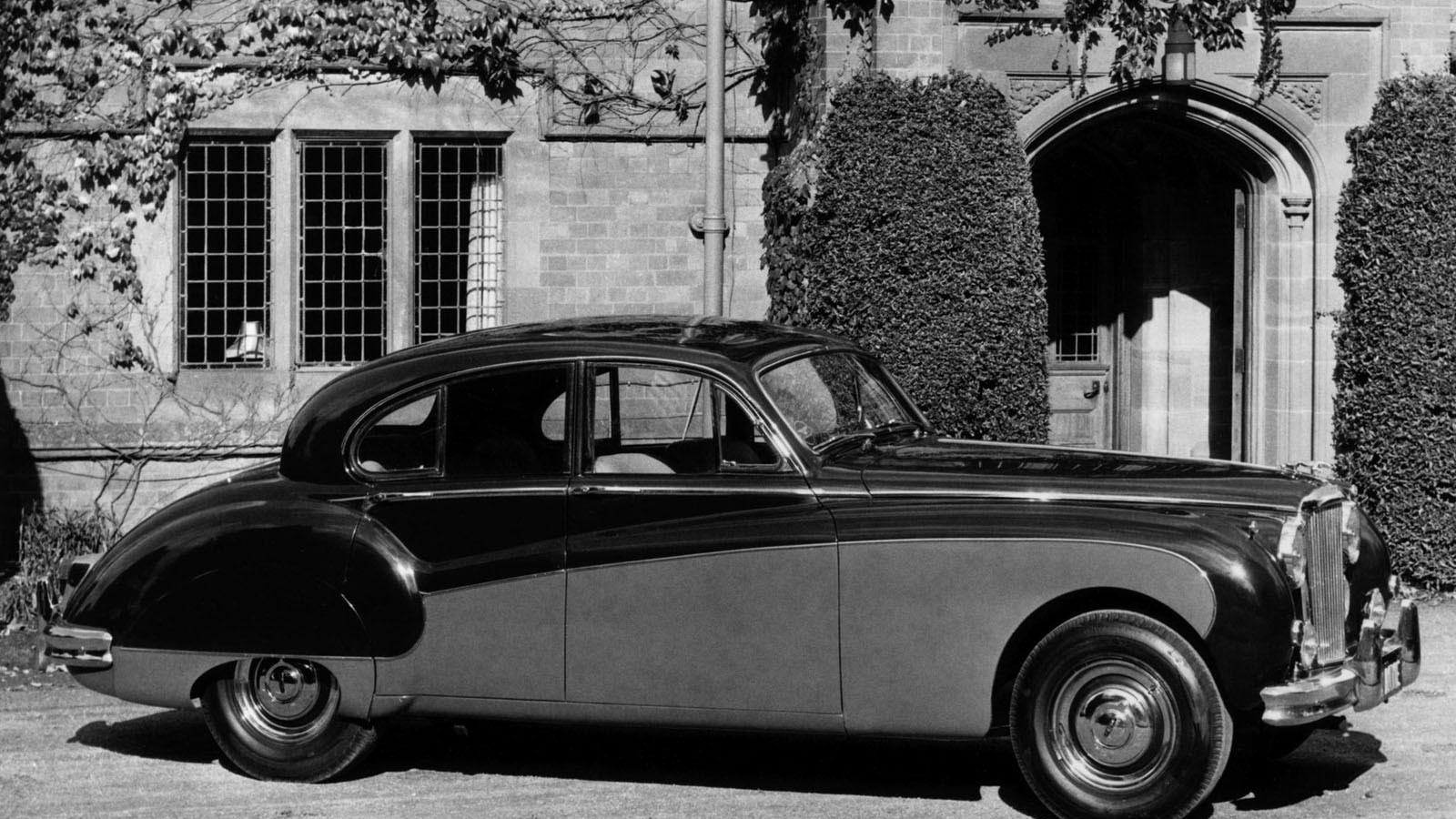 © Jaguar
© Jaguar -
 © Will Williams/Classic & Sports Car
© Will Williams/Classic & Sports Car -
 © Manor Park Classics
© Manor Park Classics -
 © Jaguar
© Jaguar -
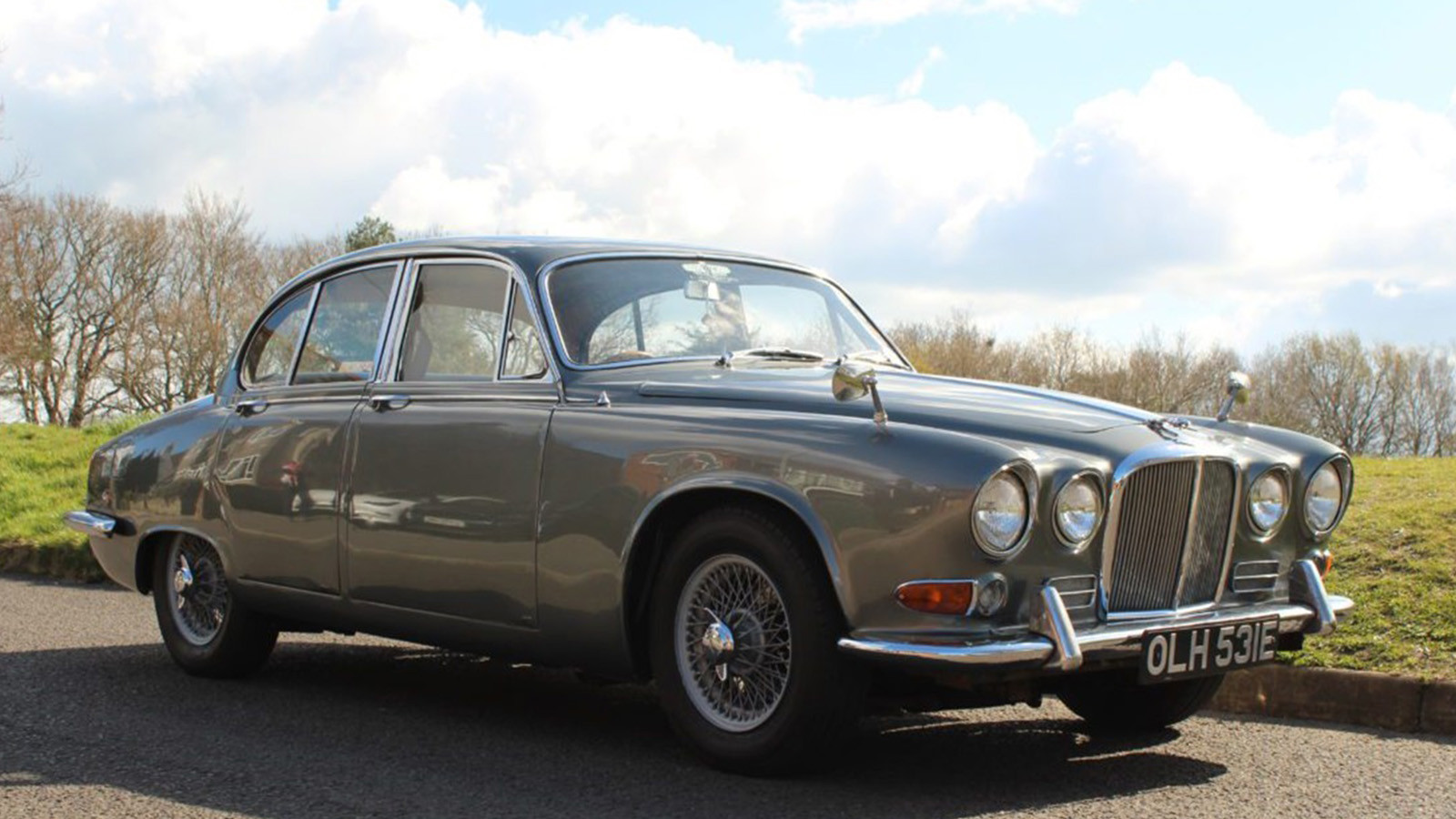 © South Western Vehicle Auctions
© South Western Vehicle Auctions -
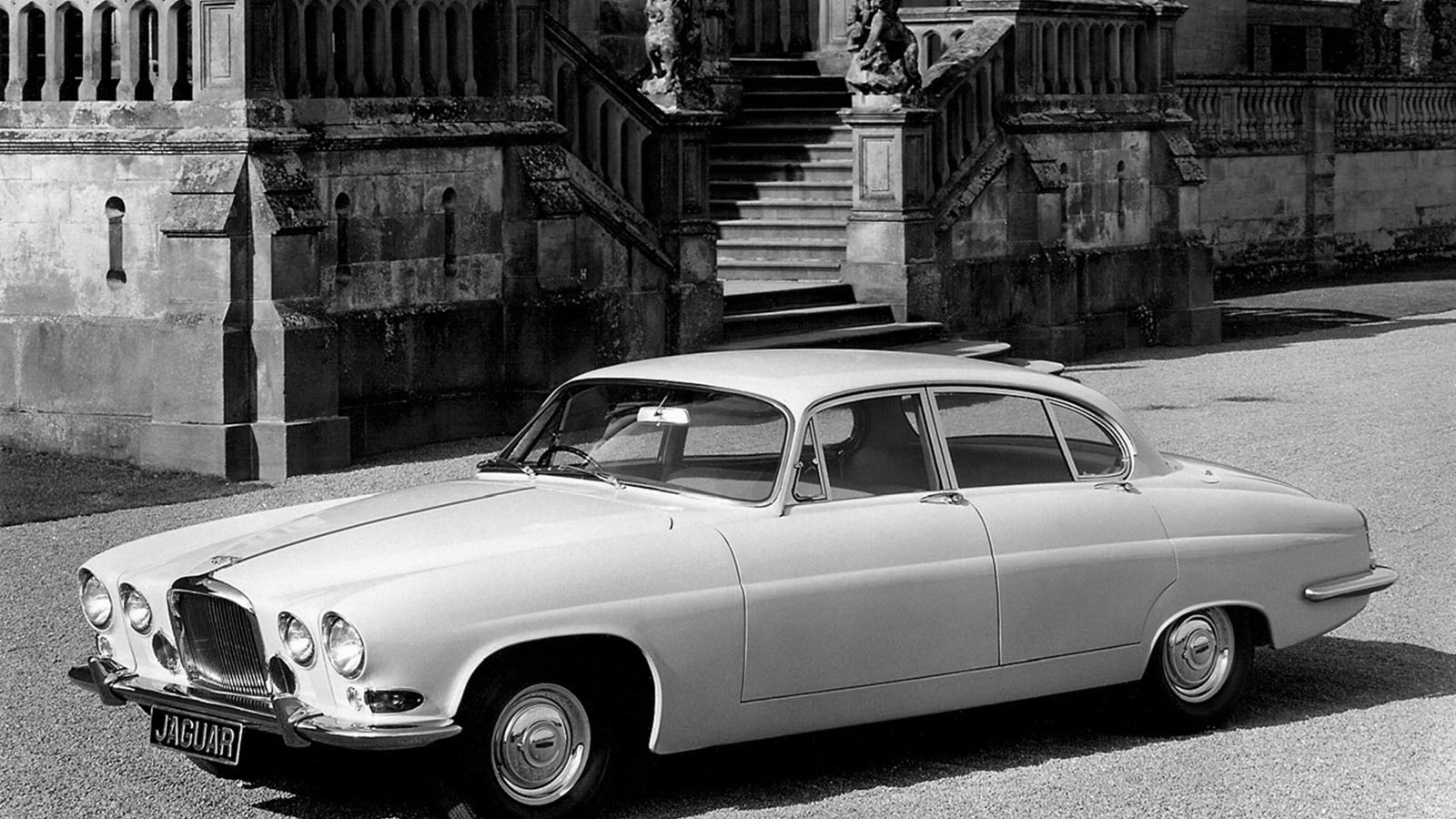 © Jaguar
© Jaguar -
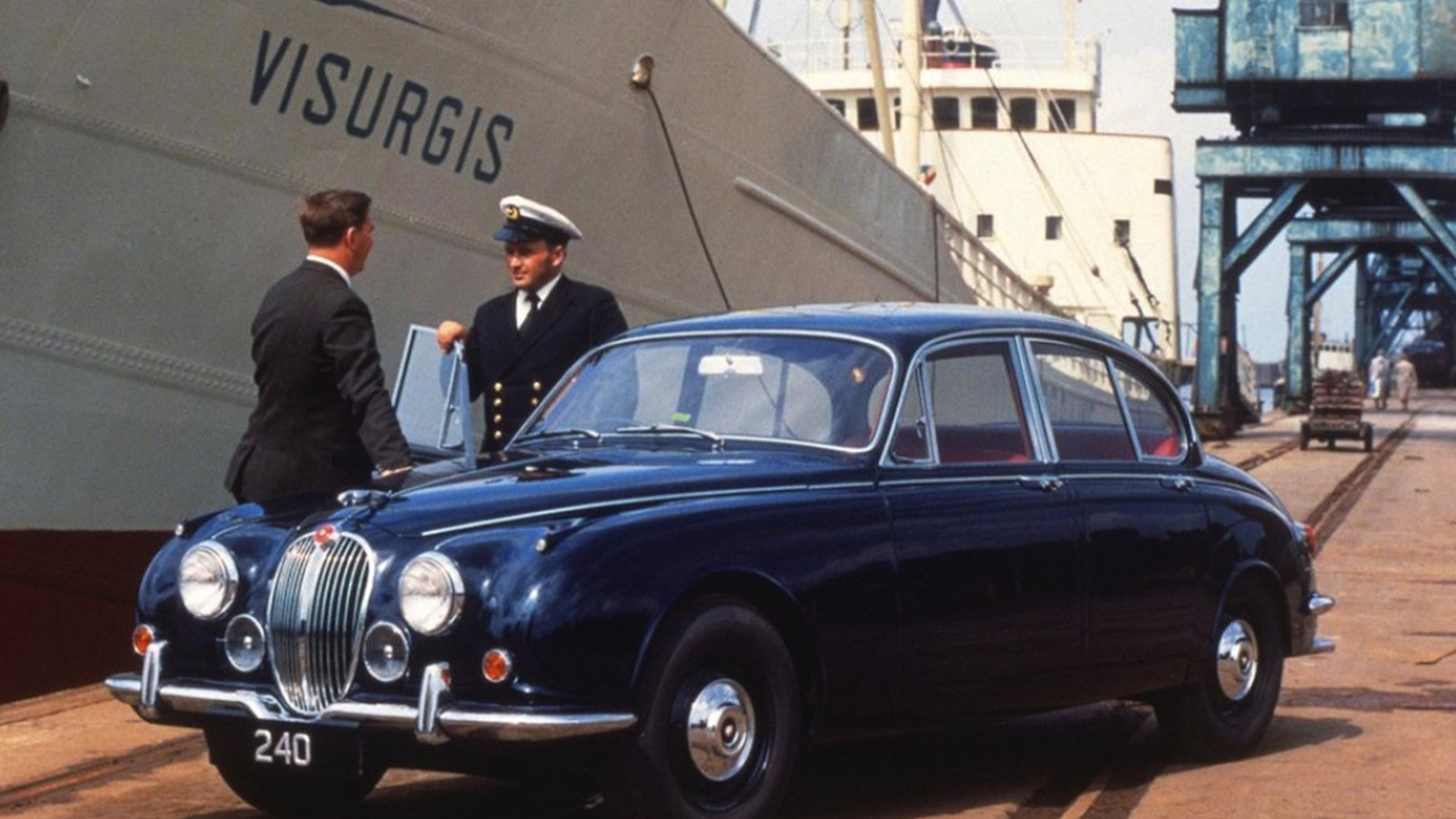 © Jaguar
© Jaguar -
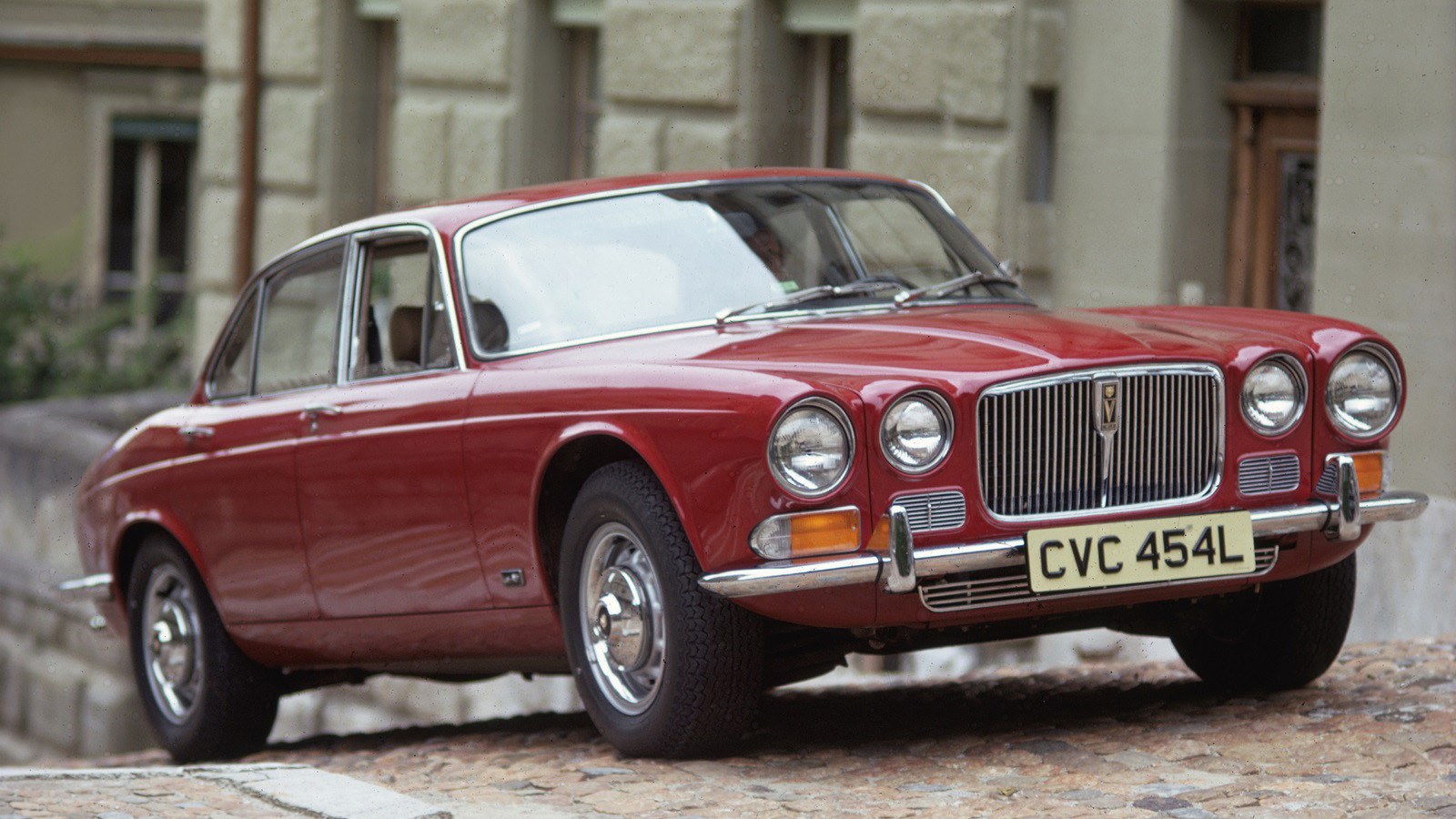 © Jaguar
© Jaguar -
 © Jaguar
© Jaguar -
 © James Mann/Classic & Sports Car
© James Mann/Classic & Sports Car -
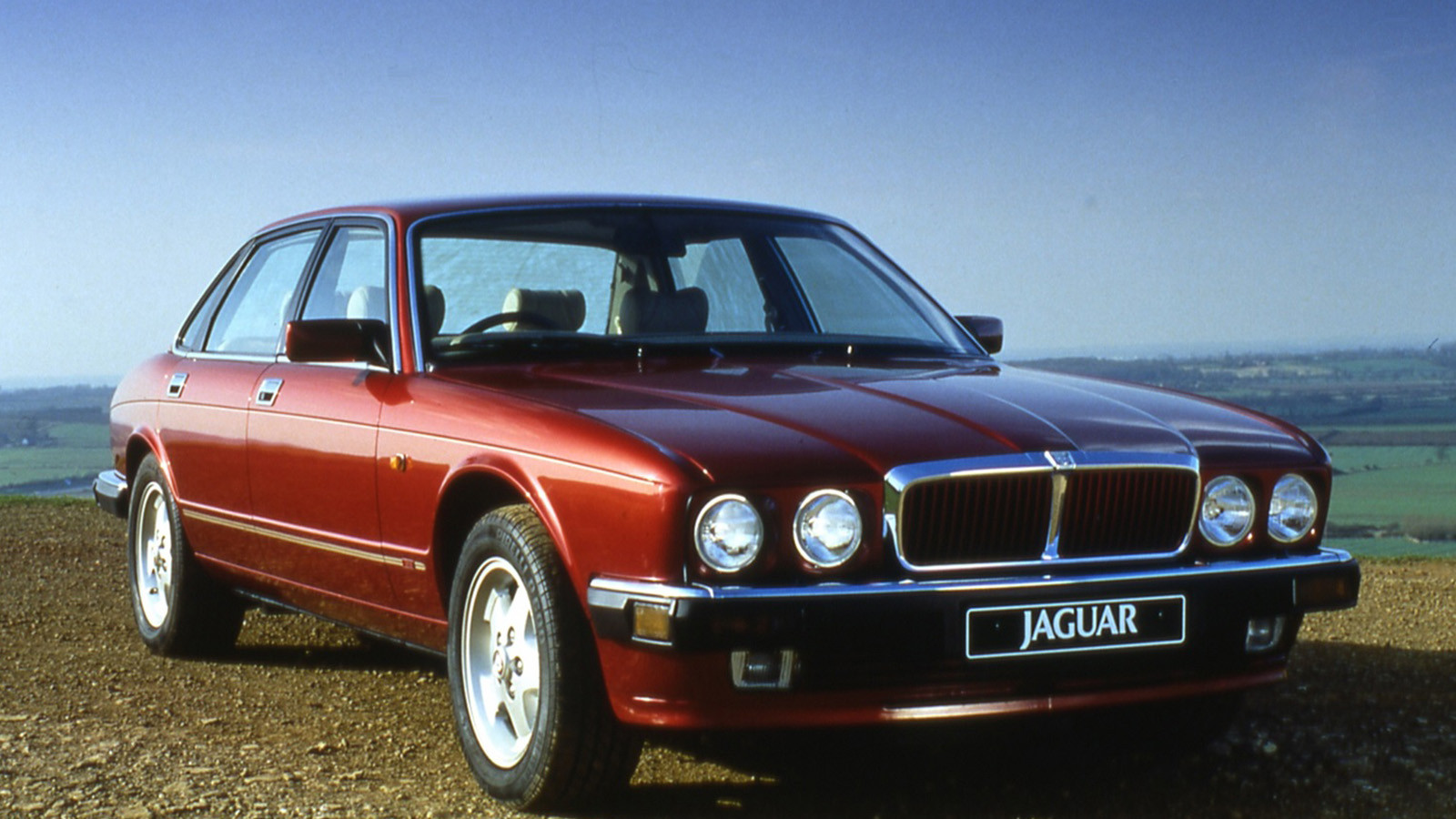 © Jaguar
© Jaguar -
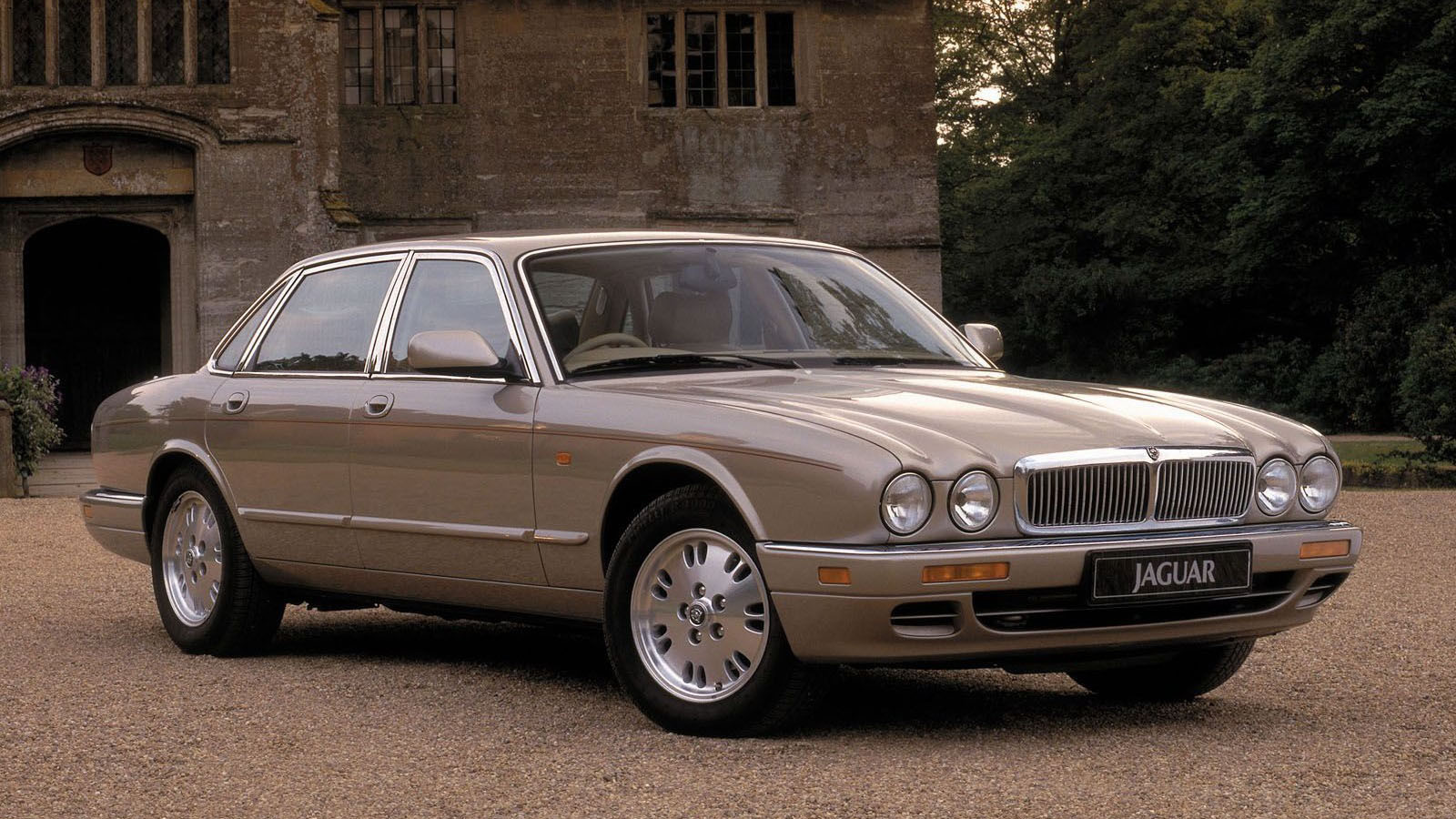 © Jaguar
© Jaguar -
 © Jaguar
© Jaguar -
 © Jaguar
© Jaguar -
 © Jaguar
© Jaguar -
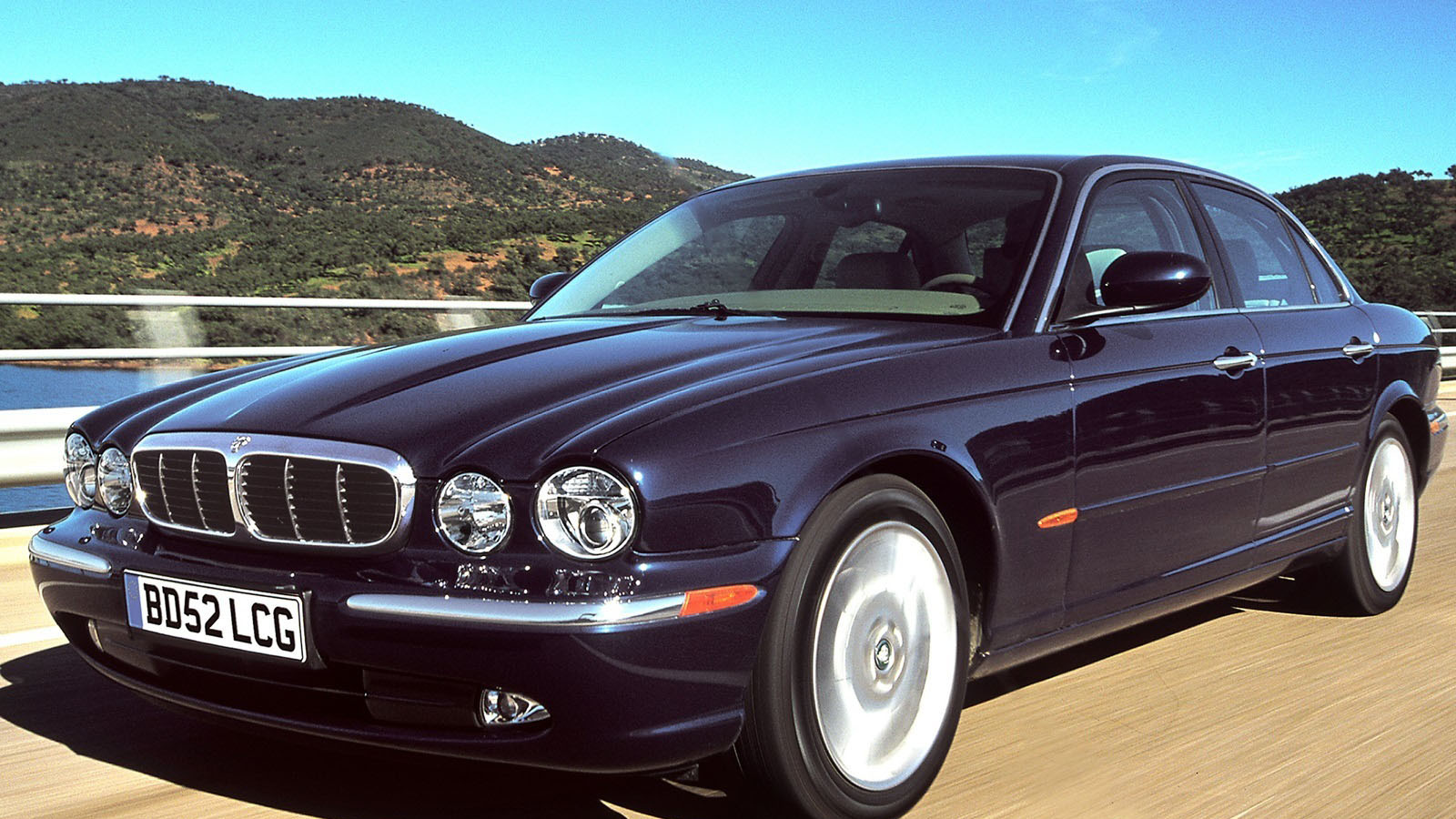 © Jaguar
© Jaguar -
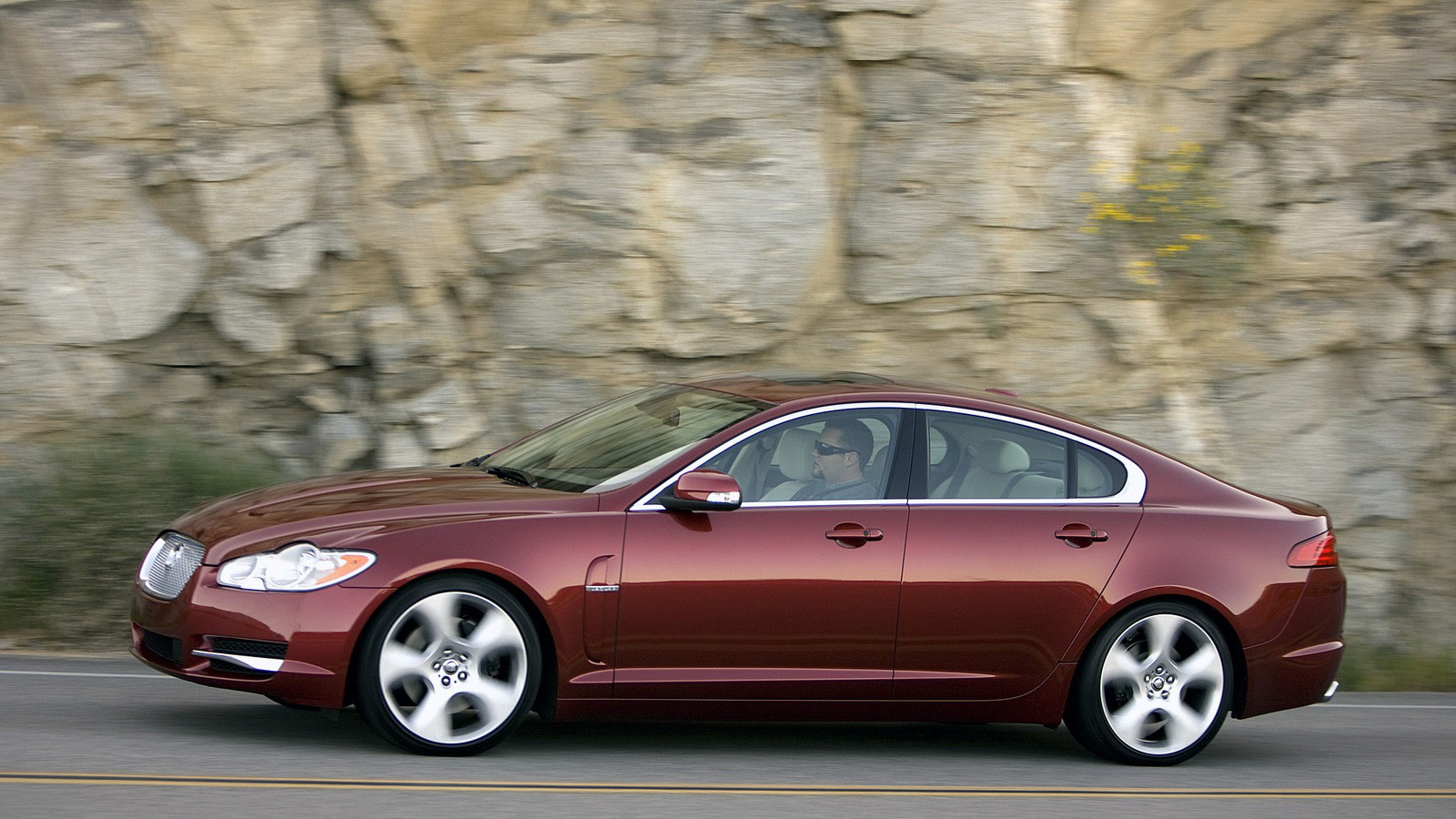 © Jaguar
© Jaguar -
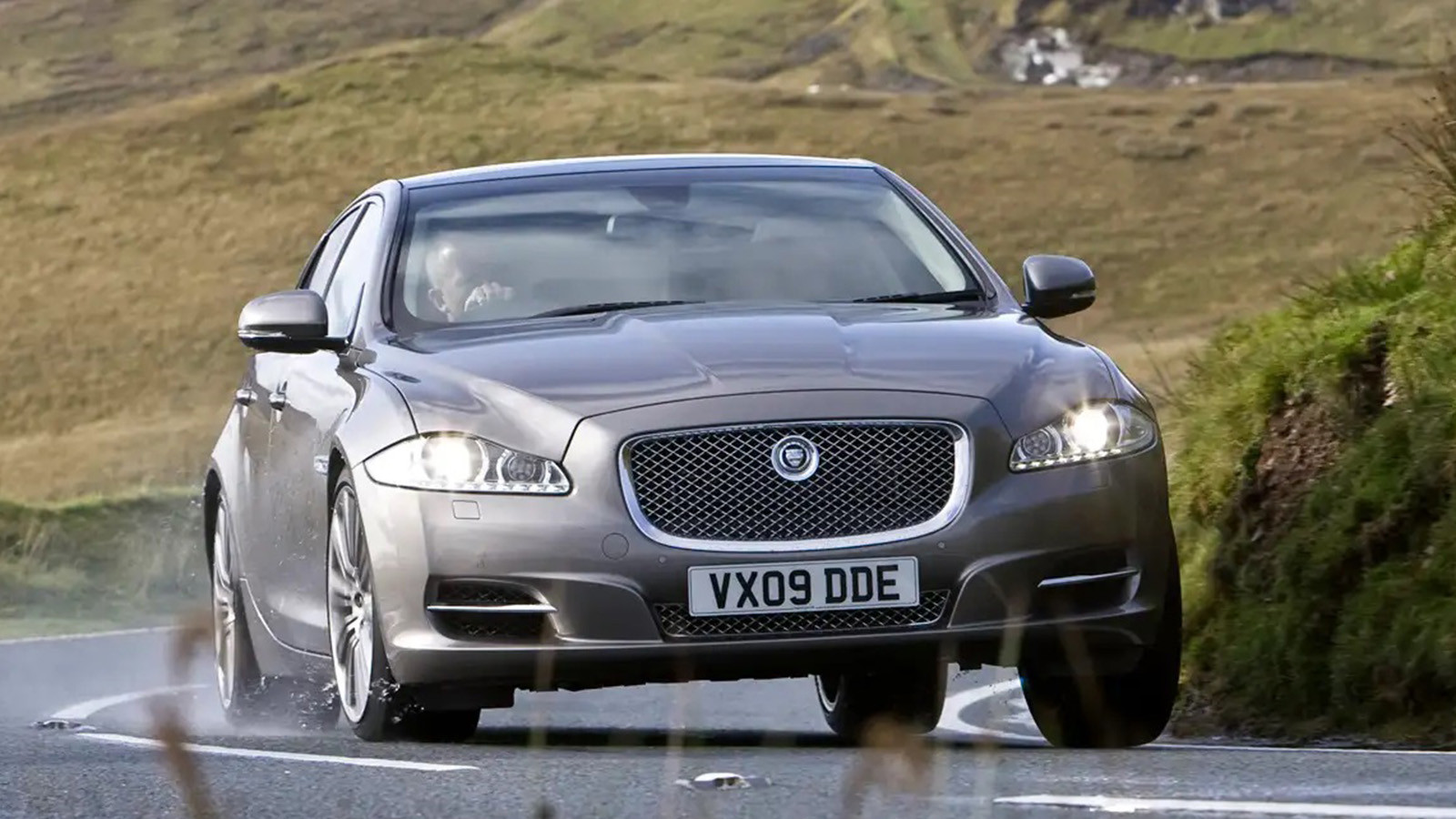 © Haymarket Automotive
© Haymarket Automotive -
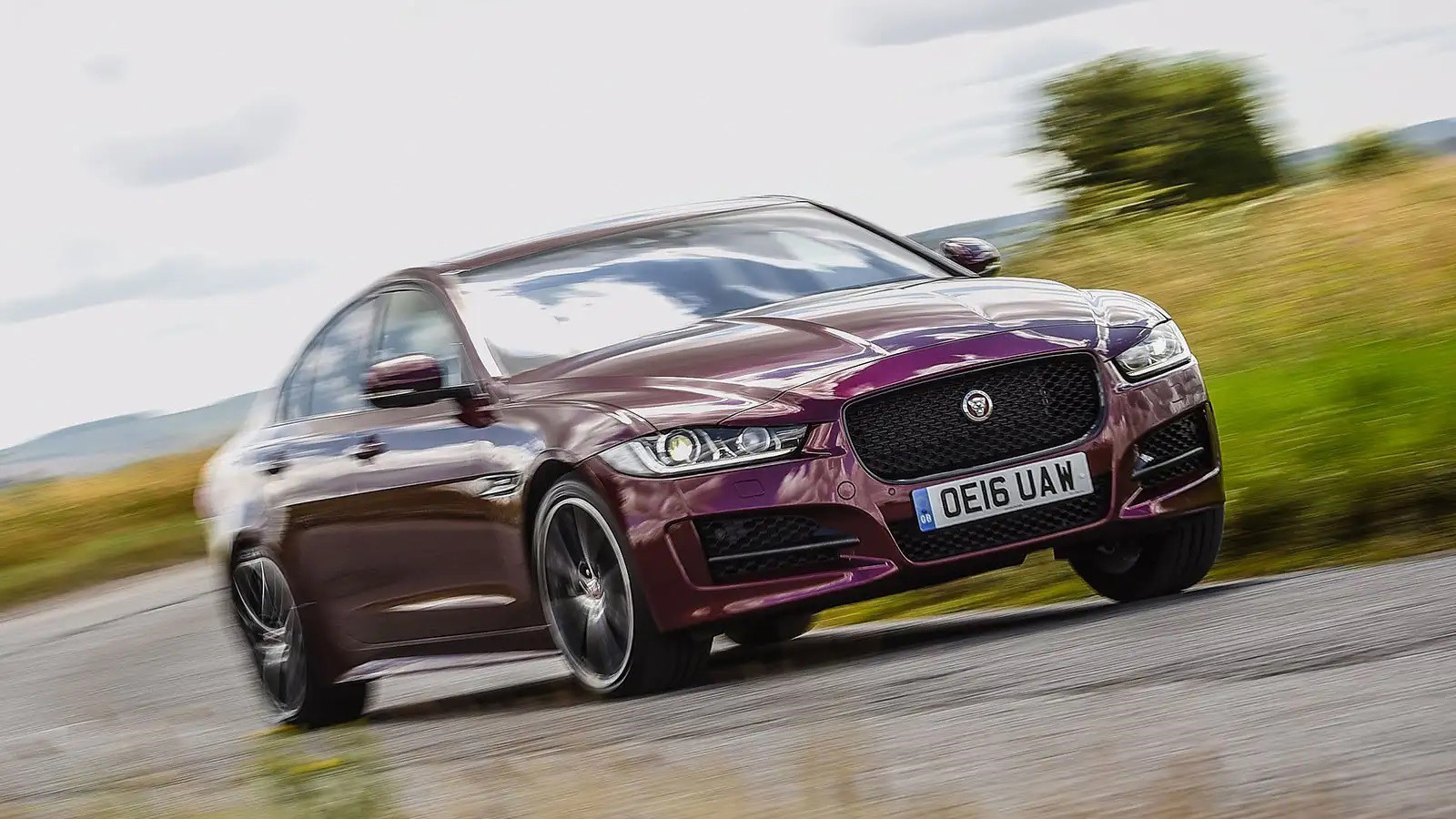 © Haymarket Automotive
© Haymarket Automotive -
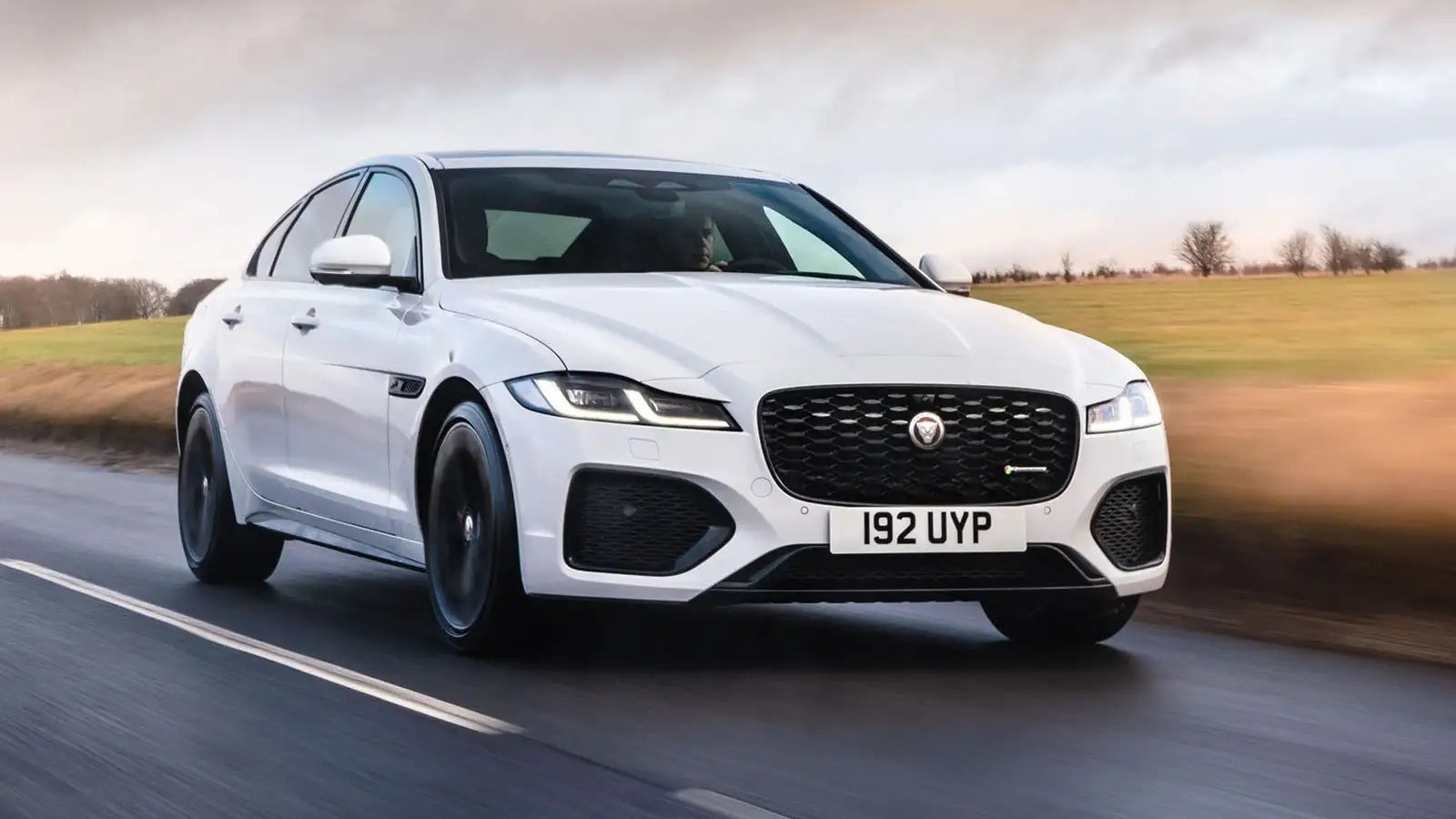 © Haymarket Automotive
© Haymarket Automotive
-
Jaguar’s past-chance saloons
As Jaguar heads towards an all-electric future with a new four-door model planned for 2025, we look at the British firm’s long history of building stylish saloons.
While the XJ was the mainstay of Jaguar saloons for more than 50 years, the company started with an Austin Seven-based model when it was called Swallow.
Through the SS models of the 1930s, Jaguar had an unerring eye for style and value under boss Sir William Lyons.
That idea expanded into a broad range of four-door models by the 1960s, which were then rationalised into the class-defining XJ luxury saloon.
Here’s every Jaguar production saloon, listed in chronological order.
-
1. 1928 Swallow Saloon
Swallow began life making motorcycle sidecars in 1922, followed by its first two-seat open model based on the Austin Seven in 1926.
It took until 1928 for the Swallow Saloon to join the range, which made its debut at the Olympia Show in October that year.
An aluminium body over an ash frame gave the Swallow a more rounded, upmarket look than the upright Austin. A V-shaped windscreen also added some sporting flair.
A Mk2 version of the Swallow arrived in 1930 with a slimmer radiator design the most obvious change.
It also had front and rear bumpers as standard, while inside the saloon now sported individual front seats rather than a one-piece bench.
-
2. 1934 SS1
The first of William Lyons’ SS models arrived in 1932 as the SS1 Coupé, and the company officially became SS Cars in 1933.
Then, in 1934, it launched its first saloon as part of the all-new SS1 range, which was a two-door but with four-light bodywork that had rear side windows in place of the coupé’s closed style with dummy hood irons.
Using a new chassis with extra bracing and a 2in (51mm) wider track, the SS1 saloon offered a rakish four-door model at a much lower price than its obvious rivals.
Power for the SS1 came from 2143cc and 2663cc straight-six Standard engines, and in 1935 there was an increase in power thanks to a higher-compression cylinder head and uprated camshaft.
Also for 1935, SS Cars added the Airline saloon, which was a fastback two-door model.
-
3. 1934 SS2
The SS2 started life in 1932 as a closed coupé with a 1005cc engine from a Standard Little Nine, but there were big changes for the 1934 SS2 that introduced tourer and saloon models along with larger engines.
The 1934 SS2 saloon was still a two-door, but with glass in the rear three-quarters to give back-seat passengers a view out.
However, space was limited in the rear of this SS2 saloon version, so it was a snug fit to carry four adults.
Improved performance for the 1934 SS2 came from its 1343cc and 1608cc engines lifted from the Standard Ten and 10/12 models, though sales never matched those of contemporary Riley and Triumph models.
-
4. 1936 Jaguar 1½ Litre
The Jaguar name made its first appearance in 1936 on the new SS Jaguar range, which started with the 1½ Litre. Unlike the previous SS1 and SSII saloons, this was a full four-door model.
The 1½ Litre’s clean lines were more modern than its predecessor’s and set the template for sleek saloon models from the Coventry firm.
A top speed of 70mph for the 1½ Litre was decent, but the car was still quite heavy for the 1608cc engine lifted from a Standard 12.
However, this model now had Girling brakes in place of the SSII’s Bendix set-up, so stopping power was much improved.
An updated 1½ Litre arrived in 1938 with a 1775cc overhead-valve engine that was based on a Standard 14’s motor but with SS Cars’ own cylinder-head design.
It also had improved suspension and a longer wheelbase for greater passenger space and comfort.
-
5. 1936 Jaguar 2½ Litre
If the SS Jaguar 1½ Litre was not sufficiently fast enough for you, the company offered the 2½ Litre.
It used a Standard-derived 2663cc straight-six, helped by a purpose-designed cylinder head by Harry Weslake and William Heynes.
As well as the powerful engine, the 2½ Litre came with a longer wheelbase than the 1½ Litre, up from 108in (2743mm) to 119in (3022mm).
This gave the 2½ Litre’s body much more elegant proportions to match its strong performance and comfort.
By the time the 2½ Litre was updated in 1938, it was the car that established William Lyons’ firm among the leading saloon-car makers of the period.
-
6. 1938 Jaguar 3½ Litre
Combining the sleek four-door bodywork of the SS Jaguar 2½ Litre with the potent 3485cc, six-cylinder engine from the SS100 sports car resulted in a superb saloon.
In line with the updates for the 2½ Litre in 1938, the 3½ Litre came with a wheelbase of 120in (3047mm).
More than any other of its pre-war models, SS Jaguar’s 3½ Litre created the template for the company’s post-war saloons. With a top speed of 95mph, the 3½ Litre was quicker than most sports cars of the time.
The 3½ Litre was also keenly priced at £445 for the saloon, which was the same as the SS100 3½ Litre, but around a third of the price of a Bentley 3½-litre saloon.
-
7. 1948 Jaguar MkV
Acutely aware of the negative connotations of the pre-war SS name in a post-war world, William Lyons’ company dropped this part of the name and stuck with Jaguar.
This applied to the warmed-over 1½-, 2½- and 3½ Litre models that persisted through to 1949, but the first new Jaguar saloon model was the MkV.
A new chassis underpinned the 2½- and 3½ Litre MkV models, along with independent front suspension and hydraulic brakes borrowed from the XK120 sports car.
The engines, however, were warmed-over versions of the old Standard units, rather than the new 3.4-litre XK straight-six.
A more rakish look to the MkV helped it sell in decent numbers, chalking up 10,466 sales of all types by the time it went off sale in 1951.
Details such as its more steeply raked windscreen and faired-in headlights set it apart from its predecessors, and hinted at what was to come.
-
8. 1950 Jaguar MkVII
Two years after the launch of the XK120, Jaguar got round to using its superb engine in its first all-new post-war saloon, the MkVII.
This name was used because Bentley had already bagged the MkVI badge, so the MkVII arrived with all-enveloping bodywork and a dashing look that fitted with Jaguar’s sporting ethos.
A distinguishing feature of the MkVII was its split windscreen, with two flat panes rather than a single curved piece of glass – buyers had to wait for the MkVIII for this.
A MkVIIM model offered a three-speed automatic gearbox in place of the two-speed auto in the standard car, as well as a power hike, fitted foglights and built-in horn grilles.
-
9. 1955 Jaguar Mk1
If the MkVII and its derivatives were the flagship saloon models, the new-for-1955 2.4- and 3.4-Litre saloons, which retrospectively became known as the Mk1, were thoroughly modern compact cars.
Unitary construction for the Mk1 was a first for Jaguar and the saloon’s front end had more than a passing resemblance to the XK140 sports car.
You could spot a 3.4 thanks to its cutaway rear-wheel spats and different grille.
The 2.4 outsold the 3.4 by a small margin – 19,400 2.4s compared to 17,340 3.4s – but the extra power of the larger engine made this four-door into a formidable performance car.
It could reach 120mph, and fortunately most later 3.4s came with disc brakes fitted.
-
10. 1956 Jaguar MkVIII
Taking the MkVIIM as its starting point, Jaguar refined its large saloon to become the MkVIII in 1956.
The most obvious update was the one-piece windscreen that gave the car a more clean-cut appearance.
Other body updates included a new grille, cutaway rear-wheel spats, a chrome side strip, plus the option of two-tone paint finishes to help disguise the MkVIII’s considerable size.
Just as pertinent for many Jaguar drivers was the increase in power by 20bhp to 210bhp for the 3.4-litre XK straight-six engine.
Cars with the four-speed manual gearbox also received a handbrake mounted on the floor, and these manual cars were good for 105mph.
-
11. 1958 Jaguar MkIX
It could be tricky for the untrained eye to spot the differences between the new MkIX and the previous MkVIII big Jaguar saloons.
However, the MkIX came with a chrome swage line down its flanks, which was usually there as a marker for the two-tone paintwork
Beyond that, almost all of the changes were under the skin of this luxury saloon.
The biggest update was the addition of the 3.8-litre XK engine to give the MkIX suitable performance and acceleration.
It could reach 115mph and almost all were sold with the three-speed automatic gearbox, rather than the four-speed manual.
Other improvements for the Jaguar MkIX were fitting disc brakes all round and power steering as standard, which made it more manageable to drive than the previous large, separate-chassis saloons.
-
12. 1959 Jaguar Mk2
It might have been an update of the earlier 2.4- and 3.4-Litre cars, but the Jaguar Mk2 was a huge success and went on to become the definitive fast saloon of the 1960s.
To update the styling, Jaguar slimmed down the window pillars for the Mk2 and gave it a wraparound rear ’screen.
There was also a wider rear track, hence cutaway spats at the back instead of fully closed ones, as well as a new grille and front foglamps.
Inside, the Mk2’s cabin was just as cosseting, and buyers could now pick between 2.4-, 3.4- and 3.8-litre models. The 3.8 was the fastest production saloon in the world when it was launched.
Jaguar cost-cutting later in the Mk2’s life saw the front foglamps removed in 1966 and Ambla plastic upholstery as standard in place of leather.
-
13. 1961 Jaguar MkX
Continuing the large Jaguar saloon line, the MkX of 1961 was the widest British car ever made up to that point at 6ft 4in (1930mm) and remained so until Jaguar introduced its XJ220 supercar.
Emphasising the MkX’s width was its low stance and rangy near-17ft length, giving it more than enough presence on the road.
Unlike its predecessors, however, the Jaguar MkX employed unitary construction that meant quite a high sill line which could make getting in and out of this low-slung saloon a bit tricky.
Few seemed to mind, though, because the MkX delivered superb comfort thanks to its all-independent suspension and standard power steering.
Most were sold with an automatic gearbox attached to the 3.8-litre straight-six, and later the 4.2-litre version.
Jaguar shifted 13,382 3.8-litre MkXs, as well as a further 5137 of the 4.2-litre models.
-
14. 1963 Jaguar S-type
Spotting a gap between the compact Mk2 and gargantuan MkX saloons, Jaguar deftly filled it with the S-type that borrowed its looks from the models that sat either side of it.
The front end of the S-type was largely the same as the Mk2, albeit with a revised grille and headlight treatment. At the back, it was very similar to Jaguar’s MkX, so you had a larger boot and twin fuel tanks.
While Jaguar’s S-type was a little heavier than the Mk2, it quickly gained a reputation as the better handling of the two, thanks to its independent rear suspension rather than the Mk2’s solid rear axle.
Jaguar also boosted the S-type’s appeal by only offering it with the 3.4- and 3.8-litre XK engines, with an all-synchro manual gearbox from early 1965 and always the option of a three-speed auto.
The larger engine was the more popular, reaching a sales total of 15,070 to the 3.4’s 9830 tally.
-
15. 1966 Jaguar 420
In Jaguar’s ever-more crowded saloon range of the mid-1960s, the 420 took the S-type and grafted on a MkX-style nose.
This model was also offered as the Daimler Sovereign, which sold 5700 cars to the Jaguar version’s 9600.
The quad-headlamp front end featured a reverse-slant grille to ape the MkX’s more upmarket appeal. However, the 420’s cabin was almost identical in spec and size to the S-type’s, so offered no greater luxury.
Where the 420 did have one up on the S-type was its 4.2-litre XK engine with smooth performance and a 125mph top speed.
It also came with dual-circuit disc brakes all round and a limited-slip rear differential to be much more sporting to drive than its looks suggested.
However, the 420 was more of a stopgap model that lasted only until 1968 and the introduction of the XJ saloon.
-
16. 1966 Jaguar 420G
The 420G took over from the MkX 4.2 as Jaguar’s top saloon-car offering in 1966, though there wasn’t a great deal to separate the pair beyond detail alterations.
Look closely and you’ll find new wheel trims, radiator grille and side chrome strip.
For the 420G, Jaguar made small changes to increase boot space and allow for larger fuel tanks, which was a wise move when the car struggled to better 12mpg.
Jaguar also produced a limousine version of the 420G on the standard wheelbase, but with a glass partition between the front and rear seats.
In addition, the 420G formed the basis for the Daimler DS420 limousine that went on to remain in production until 1992, well beyond the 1970 cut-off for the 420G. By then, Jaguar had sold 5763 420Gs.
-
17. 1967 Jaguar 240, 340
Looking to wring the last drop out of its successful small saloon range, Jaguar billed the 240 and 340 pair as a facelift of the Mk2. However, this was an exercise in cost-cutting.
Slimmer S-type-style bumpers are a big clue to the 240 and 340 compared with the Mk2, along with simple grilles in place of the front foglamps and simplified steel wheeltrims.
For the interior, Jaguar swapped leather for Ambla plastic.
However, Jaguar’s engineers did uprate the 240’s motor with a cylinder head derived from the 4.2-litre unit, giving this small-engined model just enough power to finally top 100mph (just).
-
18. 1968 Jaguar XJ S1
For 1968, it was all change for Jaguar’s saloons. With the exception of the MkX that soldiered on until 1970, the brilliant new XJ replaced the meandering saloon line-up with a single model.
As well as its modern style, the XJ brought with it a whole new level of comfort and handling, making it a better luxury saloon, yet it could hustle down country roads like a Mk2.
The cabin offered all the usual Jaguar wood and leather appeal, while there was more rear-seat space and a larger boot.
Buyers had the option of a 2.8-litre version of the XK straight-six, but most plumped for the more powerful 4.2-litre with an automatic gearbox.
Then, in 1972, Jaguar created arguably the finest car in the world at the time: the XJ12.
Its 5.3-litre V12 delivered effortless pace and refinement, though its ferocious thirst made it costly to run. An XJ12L long-wheelbase model was also offered for those owners who preferred to sit in the back.
-
19. 1973 Jaguar XJ S2
As facelifts go, the Series 2 version of Jaguar’s XJ saloon was very successful.
It had to cope with customer demands for greater luxury, while US regulations meant stricter safety standards were being imposed.
What Jaguar came up with was a handsome update of the XJ with a slimmer front grille, raised bumpers to address crash regulations in the US, plus a revised dashboard.
The latter now placed all of the dials directly in front of the driver rather than across the dash, and there was also an improved air-conditioning set-up that was vital for sales in the US.
The 2.8- and 4.2-litre engines remained, and Jaguar added a 3.4-litre motor to bridge the gap in early 1975.
A long-wheelbase body was offered for the 4.2-litre model, and this was standard for the V12-powered XJ12.
-
20. 1979 Jaguar XJ S3
By the end of the 1970s, the XJ was beginning to look long in the tooth, but Jaguar gave it another deft makeover to create the Series 3 model.
This was ably handled by Pininfarina, which gave the XJ a lower roofline, flush doorhandles, and new tail-lights that flowed into the pronounced rear haunches.
Far from appearing to be a warmed-over model, the S3 kept Jaguar right in the thick of the premium, saloon-car fray alongside BMW and Mercedes-Benz.
This was helped by an updated cabin that retained the wood and leather style, but with improved equipment, safety and ergonomics.
Fuel injection helped the engines offer better economy and performance, and you could have a five-speed manual gearbox with the 4.2-litre model.
The V12 started with 286bhp and grew to 295bhp in 1981 with the HE (High Efficiency) motor that could now manage 16mpg.
Because the replacement XJ40 had not been intended to receive the V12 engine, the Series 3 model carried on in production up to 1992.
-
21. 1986 Jaguar XJ (XJ40)
Despite serial delays in its design, development and eventual launch, the Jaguar XJ40 was a quantum leap forward for the company’s only saloon model of the period.
This Jaguar XJ, which became widely referred to by its internal Jaguar codename of XJ40, was more rigid, lighter, used fewer body pressings and was more extensively tested than its predecessor.
That didn’t prevent some quality issues with early models, but Jaguar still had a winner on its hands thanks to the excellent comfort, handling, ride and performance of this XJ.
Key to much of this was a new range of twin-cam, 24-valve, six-cylinder engines that replaced the XK units.
To begin with, there were 2.9- and 3.6-litre units, which were then replaced by 3.2- and 4-litre motors.
Jaguar also eventually fitted its V12 to the XJ40, though not until 1993 when the range was due to be replaced.
There was also the XJR with a 4-litre engine as a more sporting take on the XJ theme.
All had comfortable interiors, which were notable for not being especially spacious and their digital read-outs for ancillary gauges.
-
22. 1994 Jaguar XJ (X300)
Look closely and you can easily identify the XJ40’s central hull in the X300 version of the XJ that arrived in 1994.
However, Jaguar did a marvellous job of giving this saloon a modern look that was also much more in keeping with the Series 1-3 models, rather than the XJ40’s angles.
Buyers lapped up the X300’s style and it sold 78,534 in the brief time it was on sale up to 1997, with 3.2- and 4-litre engine options.
On top of this, Jaguar also sold 6547 of the XJR performance saloon with its supercharged, 4-litre straight-six that meant 0-60mph in 5.7 secs.
Jaguar also fitted the 6-litre V12 to the X300 right from the start of its production, building 1828 of this model. It proved to be the last of the V12 Jaguars.
-
23. 1997 Jaguar XJ (X308)
Just as the MkVII took its engine from Jaguar’s latest sports car, the XK120, in 1950, the X308 generation of XJ saloon did the same with the XK8.
The coupé and convertible XK8 range arrived in 1996 and its 4-litre V8 was then used in the XJ.
The four-door saloon also made use of a 3.2-litre version of the V8, while a supercharged 4-litre unit meant the XJR could take the fight to the BMW M5.
While the changes in the engine bay were seismic, they were subtle on the car’s exterior.
Rounded rather than rectangular front indicators were the biggest clue, along with small ‘V8’ badges on the central pillars.
Inside the X308, there were bigger updates with a simplified, three-gauge main dashboard display.
The fussy buttons either side of the steering column were also ditched in favour of a better centre console and some steering wheel-mounted controls.
What didn’t change was the sublime blend of comfort and handling that set the XJ apart from its key German rivals, even if the cabin was not as roomy.
That didn’t seem to bother buyers, who could choose a long-wheelbase version, and Jaguar sold 121,534 X308s by the time production ended in 2003.
-
24. 1998 Jaguar S-type
When it was launched in 1998 at the Birmingham International Motor Show, much of the Jaguar S-type’s fanfare was stolen by the Rover 75 that arrived at the same time.
Yet the S-type was equally as important, because it brought the British firm into direct competition with the Audi A6, BMW 5 Series and Mercedes-Benz E-Class.
Not everyone was wowed by the retro styling of the new S-type, which did its best to evoke the 1960s original with its quad headlights and grille.
Based on the same platform as the Lincoln LS, which was part of then parent company Ford’s push to keep costs down, the S-type drove well and had a clubby interior.
Build quality on early cars was a sticking point, but this improved throughout the S-type’s life, and the engine range expanded from the initial 2.5- and 3-litre V6 petrols and 4-litre V8 to include a fine 2.7-litre turbodiesel V6, as well as the storming, near-400bhp, supercharged, 4-litre V8.
In the end, the Jaguar S-type matured into a fine executive saloon that paved the way for the XF and earned its maker 291,386 sales.
-
25. 2001 Jaguar X-type
Not since the Mk2 had Jaguar had a truly compact saloon in its line-up, but that changed in 2001 with the launch of the X-type.
Its styling was very much a scaled-down version of the XJ’s, and underneath the car shared a platform with the Mondeo of parent firm Ford.
While some gurned about this, the Mondeo was an excellent car and the X-type shared its fine handling and comfort.
The Jaguar was offered with front-wheel drive – a first for the company – if you opted for the least powerful 2.1-litre V6 or either of the turbodiesel engines.
However, the real fun lay with the 2.5- and 3-litre V6 models that came with all-wheel drive to give the Audi A4 and BMW 3 Series a tough time on twisty roads.
When the Jaguar X-type went off sale in 2009, the company had sold 355,227 of its compact saloon, and the handsome estate based on it.
-
26. 2004 Jaguar XJ (X350)
To the casual observer, it looked like business as usual at Jaguar with an updated XJ for 2003. A bit bigger and a bit posher inside, plus a new 2.7-litre turbodiesel version.
However, this X350 was possibly the most radical rethink of the Jaguar XJ in the model’s history. It ditched steel for its platform and body panels in favour of weight-reducing aluminium.
At a stroke, the new, bigger XJ weighed 40% less than its X308 predecessor. This made it quicker and more efficient, and it also dealt with rough roads and corners better thanks to a 60% stiffer body.
All of the usual XJ luxury, wood and leather were present inside, as well as much more rear legroom and a generous boot. You could also have a long-wheelbase model for that limo feel.
Power came from the V6 diesel, or there were petrol 3-litre V6 and 3.5- and 4.2-litre V8s.
The XJR stuck with a supercharger to free up 394bhp for 0-60mph in 5 secs and a top speed electronically capped at 155mph.
-
27. 2007 Jaguar XF
To address the criticism of the S-type being too retro in its looks, Jaguar came up with the Ian Callum-styled XF for 2007.
Gone were any hint of 1960s looks in favour of a four-door coupé appearance that brought the Mercedes-Benz CLS into the Jaguar’s sights, as well as the more obvious E-Class.
The thoroughly modern theme was carried through the cabin with plenty of passenger space and some fine details.
When you turned on the ignition, the dashboard vents rotated to open up, while the rotary gear selector rose up from the transmission tunnel. It looked great and worked well.
This original X250 generation of XF was offered with a range of petrol and turbodiesel engines, but it’s the supercharged 5-litre V8 of the XFR supersaloon that is the highlight – with 503bhp, this was every inch a BMW M5 rival for performance and handling.
Jaguar added a Sport Brake estate in 2012 to broaden the XF’s appeal, while an XFR-S model arrived the same year with a 543bhp, supercharged, 5-litre V8 and a top speed limited to 186mph.
-
28. 2010 Jaguar XJ (X351)
If the all-aluminium X350 generation of Jaguar XJ was radical under the skin, its X351 replacement of 2010 was equally revolutionary at face value.
Determined to make a break from styling that could be traced back to the 1968 original, this Ian Callum design was very different and more aggressive in its appearance.
The interior was said to have been inspired by luxury yachts, notably the arc that swept across the dashboard under the windscreen.
In the back, there was more legroom, but space for occupants’ heads was compromised by the swooping roofline.
Not all contemporary road tests were convinced by the firm ride, either, but power from a range of 3-litre V6 petrol and diesel engines, plus potent petrol V8s, made this generation of Jaguar XJ very rapid.
It was also technically sophisticated thanks to gadgets such as adaptive cruise control, lane assist and semi-automated parking.
-
29. 2015 Jaguar XE
It took Jaguar six years to follow the X-type with the XE small saloon to again take up the cudgels against the dominant German compact saloons in this class.
By now, the styling direction of Ian Callum was familiar to Jaguar customers and the XE appeared like a smaller, Russian-doll version of the XF.
Unveiled in 2014, the XE went on sale a year later.
Jaguar Land Rover’s own Ingenium four-cylinder engines offered excellent fuel economy in the XE, but have not enjoyed the happiest reputation for reliability.
The potent petrol V6s turn the XE into a fine small sports saloon, or you could try to find one of the 300 Project 8 cars built with a near-600bhp supercharged 5-litre V8 – these ultimate XEs have a top speed of 200mph and can do 0-60mph in 3.3 secs.
-
30. 2015 Jaguar XF
The, to date, most recent saloon to be launched by Jaguar dates back to 2015 now, and is the second-generation XF, codenamed X260.
Where the original Jaguar XF had a steel body, this later model used an aluminium body to reduce weight and improve both timed and environmental performance.
Jaguar built a long-wheelbase version of the XF for the Chinese market, but this model was not offered elsewhere in the way the XJ models of the 1970s were.
The X260 sold well in both saloon and Sport Brake (estate) versions, each available with a range of four-cylinder and V6 petrol and diesel engines.
However, with Jaguar changing its focus towards an all-electric line-up of cars, this XF ended production in mid-2024.
We hope you enjoyed this gallery. Please click the ‘Follow’ button above for more super stories from Classic & Sports Car.
